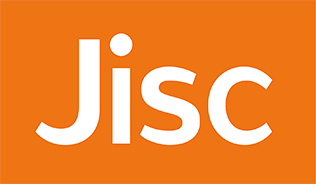Perception of Bank Customers Towards Plastic Money in Egypt
DOI:
https://doi.org/10.54536/ajebi.v3i3.3013Keywords:
Bank Customers, Plastic Money, Perception, Technology, Information System, Financial BenefitsAbstract
This study aimed to investigate the perception of bank customers towards plastic currency in Egypt, which helps to understand the factors that positively influence the customers’ perception and also identify the challenges that hesitate the bank customers to use plastic currency. A quantitative analysis approach was used to conduct the study in 3 different well-known banks of Egypt. A sample was selected using the snowball sampling method, and the data was collected through a structured questionnaire and analyzed in SPSS using a descriptive frequency method. The findings highlight that in Egypt, financial benefits, infrastructure, availability of means, information system, and technology have positively influenced the perception of bank customers toward the plastic currency.
Downloads
References
Adeniji, R. B. (2020). Effect of electronic payment system on bank’s performance in Nigeria.
Ahmad, A. H., Green, C., & Jiang, F. (2020). Mobile money, financial inclusion and development: A review with reference to African experience. Journal of economic surveys, 34(4), 753-792.
Ahsan, M. A. (2020). Card service: A successful city retail banking product.
Akhundov, T. (n.d.). Factors influencing customers’ bank selection decision.
Alam, M. M., Awawdeh, A. E., & Muhamad, A. I. B. (2021). Using e-wallet for business process development: challenges and prospects in Malaysia. Business Process Management Journal, 27(4), 1142-1162.
Ali, M. A., Hussin, N., & Abed, I. A. (2019). Electronic payment systems: Architecture, elements, challenges and security concepts: An overview. Journal of Computational and Theoretical Nanoscience, 16(11), 4826-4838.
Amankwah‐Amoah, J. (2019). Technological revolution, sustainability, and development in Africa: Overview, emerging issues, and challenges. Sustainable Development, 27(5), 910-922.
Arıkan, N. İ. (2020). An overview of cryptocurrencies: The theory of money perspective. Malatya Turgut Özal Üniversitesi İşletme ve Yönetim Bilimleri Dergisi, 1(2), 147–165.
Balkan, B. (2021). Impacts of digitalization on banks and banking. In The impact of artificial intelligence on governance, economics and finance (Vol. I, pp. 33–50).
Bindseil, U. (2019). Central bank digital currency: Financial system implications and control. International Journal of Political Economy, 48(4), 303-335.
Cardozo-Ortiz, P. A., Machado-Franco, C. L., Cadena-Silva, C. A., Cepeda-López, F. H., Ciceri-Lozano, A. M., Marin-Giraldo, J. D., Mariño-Martínez, R., Martínez-Ventura, A. C., Miguélez, J., & Villalobos Perez, J. (2023). Financial infrastructure report 2022: Payment systems report—June of 2022.
Do, V. A. (2020). Market research on digital payment methods in Vietnam: The opportunities and challenges of Vietnam going cashless.
Dula, C., & Chuen, D. L. K. (2018). Reshaping the financial order. In Handbook of blockchain, digital finance, and inclusion (Vol. 1, pp. 1–18). Elsevier.
Elkmash, M. (2022). The impact of financial technology on banking sector: evidence from Egypt. International Journal of Finance, Insurance and Risk Management, 12(1), 100-118.
Fouad, J., Said, M., Sherif, W., & Zaki, C. (2022). Public banks and development in Egypt: Overview, issues, and the way forward.
Guseva, A., & Rona-Tas, A. (2014). Plastic money: Constructing markets for credit cards in eight postcommunist countries. Stanford University Press.
Hossin, T. (2018). Reporting on foreign exchange operation in the banking industry of Bangladesh: Two selected commercial banks (Unpublished manuscript). Stamford University Bangladesh.
Humbani, M., & Wiese, M. (2018). A cashless society for all: Determining consumers’ readiness to adopt mobile payment services. Journal of African Business, 19(3), 409-429.
Hussein, H. (2020). The impact of financial technology on financial inclusion: the case of Egypt. IOSR Journal of Economics and Finance, 11(6), 35-51.
Khaled, A., & Mohammed, M. I. (n.d.). The relationship between financial inclusion and economic growth: A case study on Egypt from 2004 to 2020.
Khillare, S. (2019). A Study of Consumer’s Expenditure Behavior and Its Significance for Using Plastic Money. Think India Journal, 22(20), 246-257.
Krishna Prasad, K., & Ushadevi, P. (2018). An online comparative study on mobile banking financial transactions of major nationalized banks in India. In Exploring avenues in banking, management, IT, education & social sciences (p. 209).
Mao, C. C., & Ma, Z. X. (2021). The analysis of the regional economic growth and the regional financial industry development difference in china based on the theil index. International Journal of Economics and Finance Studies, 13(1), 128-154.
McAndrews, J. J. (2020). The case for cash. Latin American Journal of Central Banking, 1(1-4), 100004.
Moshood, T. D., Nawanir, G., Mahmud, F., Mohamad, F., Ahmad, M. H., & Abdul Ghani, A. (2021). Expanding policy for biodegradable plastic products and market dynamics of bio-based plastics: challenges and opportunities. Sustainability, 13(11), 6170.
Munawar, A., Duwila, U., & Harini, D. (2020). A Review on Types of Money in the Development of Community Trade. Journal of Critical Reviews, 7(8), 1993-1997.
Ng, D., Kauffman, R. J., Griffin, P., & Hedman, J. (2021). Can we classify cashless payment solution implementations at the country level? Electronic Commerce Research and Applications, 46, 101018.
Pazarbasioglu, C., Mora, A. G., Uttamchandani, M., Natarajan, H., Feyen, E., & Saal, M. (2020). Digital financial services. World Bank, 54.
Raju, R. (2019). A study on the use of plastic money as an important mode of payment among users and non-users.
Renu, D. R. S. (2022). Customer perspectives on plastic money in rural areas.
Rochemont, S. (2020). A cashless society in 2019. In Institute and Faculty of Actuaries.
Rodrick, S. S., Islam, H., Sarker, S. A., & Tisha, F. F. (2021). Prospects and Challenges of using Credit Card Services: A Study on the users in Dhaka City. AIUB Journal of Business and Economics, 18(1), 161-186.
Sadekin, M. S., Mukta, S. N., & Shaikh, M. A. H. (2019). Customers’ trust on e-banking system in Bangladesh. International Journal of Economics, Finance and Management Sciences, 7(6), 178-186.
Sarangi, B. (2023). Cashless economy and electronic money: Concepts, nexus, opportunities, and challenges. In Indonesian Annual Conference Series.
Sari, A. (2018). Innovation of Secure Payment Gateway Principles from Cash to Bitcoin. Innovation, 2(12), 52-58.
Shirai, S. (2019). Money and central bank digital currency.
Stulz, R. M. (2019). Fintech, bigtech, and the future of banks. Journal of Applied Corporate Finance, 31(4), 86-97.
Talwar, S., Talwar, M., Kaur, P., Singh, G., & Dhir, A. (2021). Why have consumers opposed, postponed, and rejected innovations during a pandemic? A study of mobile payment innovations. Australasian Journal of Information Systems, 25.
Tawakol, F. (2023). Financial technology in Egypt between opportunities and challenges. Russian Law Journal, 11(3).
Zhamiyeva, R. M., Sultanbekova, G. B., Abzalbekova, M. T., Zhakupov, B. A., & Kozhanov, M. G. (2022). The role of financial investigations in combating money laundering. International Journal of Electronic Security and Digital Forensics, 14(2), 188-198.
Downloads
Published
How to Cite
Issue
Section
License
Copyright (c) 2024 Sandra Sánchez, Mostafa M. K. Elsayed

This work is licensed under a Creative Commons Attribution 4.0 International License.














